Search results7 results
COLLECTION
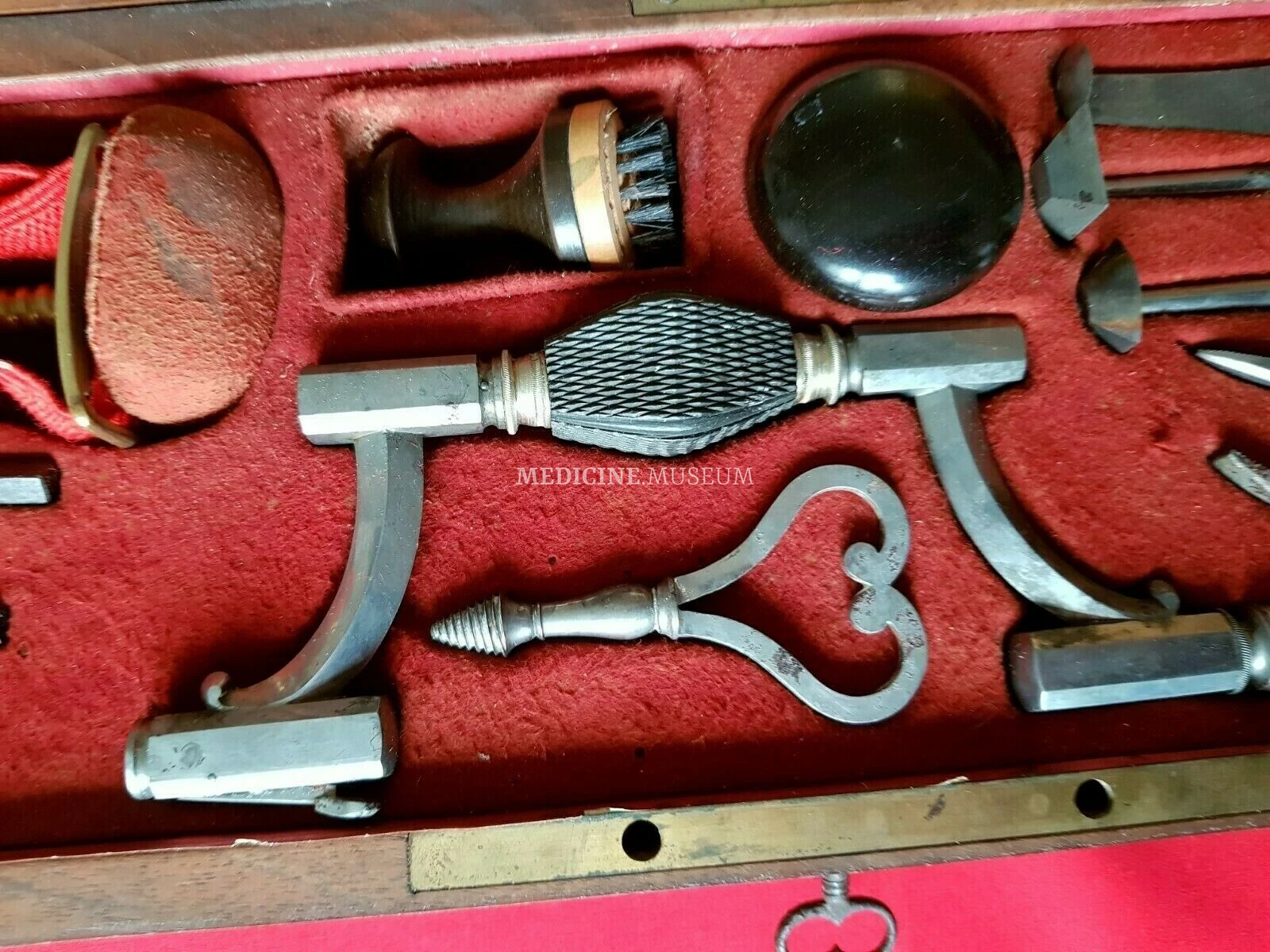
France, 1820
The rare French amputation kit, early 19 century, contains the typical instruments of a trauma and military surgeon, such as brace and bit cranial trephine, elevators and rugines, amputation saw, brush to clean the operative field. The case has two compartments, has original key.

USA, 1870
American Amputation and trepanation cased set, by Shepard & Dudley NY, late XIX century. The wooden case contains the typical instruments of a trauma surgeon, such as amputation saw, trephine head with handle, screw tourniquet. The amputation saw and three amputation knives have ebony handles, the rest hand instruments like scalpels and hook have ivory handles. The case has two compartments lined with violet velvet. On the cover of the upper compartment, the inscription "SHEPARD & DUDLEY * NEW YORK".
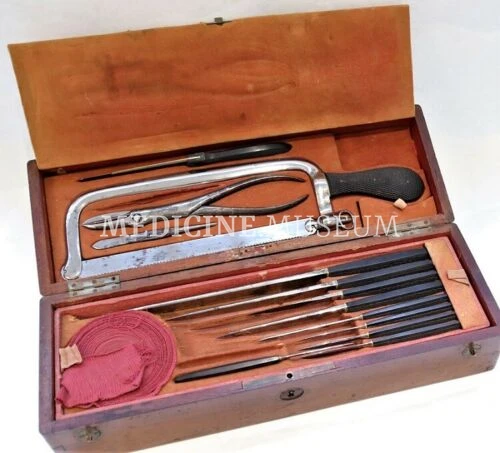
France, 1880
The rare French amputation kit, 18 century, contains the typical instruments of a trauma and military surgeon, such as hand drills, trephine heads, amputation saw, brush to clean the operative field made by Collin / Charrière á Paris. The case has two compartments, has original key.
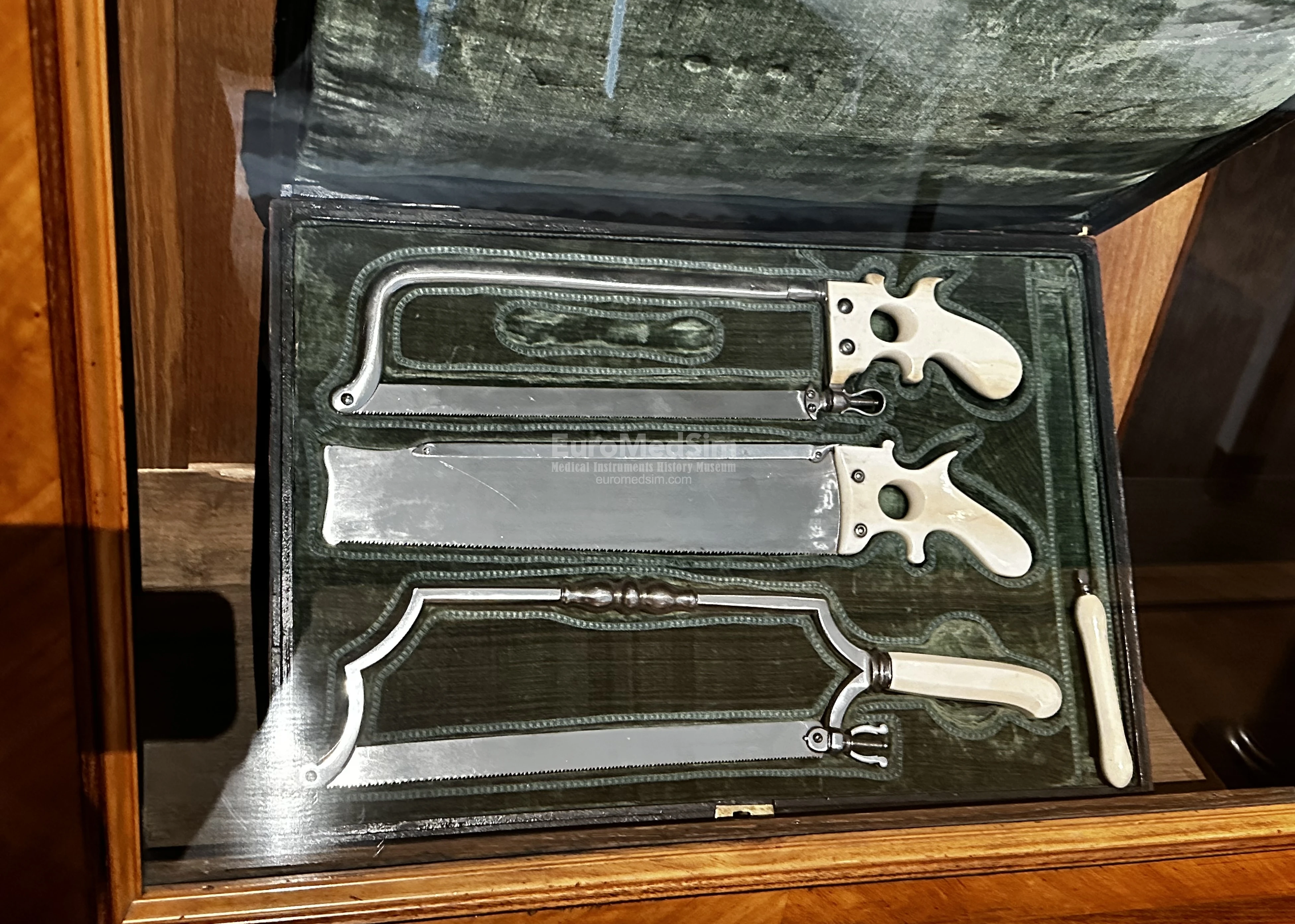
Austria, 1785
A collection of 65 sets of surgical instruments made by Viennese craftsman Joseph Malliard under the direction of Giovanni Alessandro Brambilla, an Italian-born Austrian surgeon eighteenth-century innovator in military surgery. Today, this collection, known as the “Instrumentarium Chirurgicum Militare Austriacum” is on display at the Josephinum Museum, Vienna
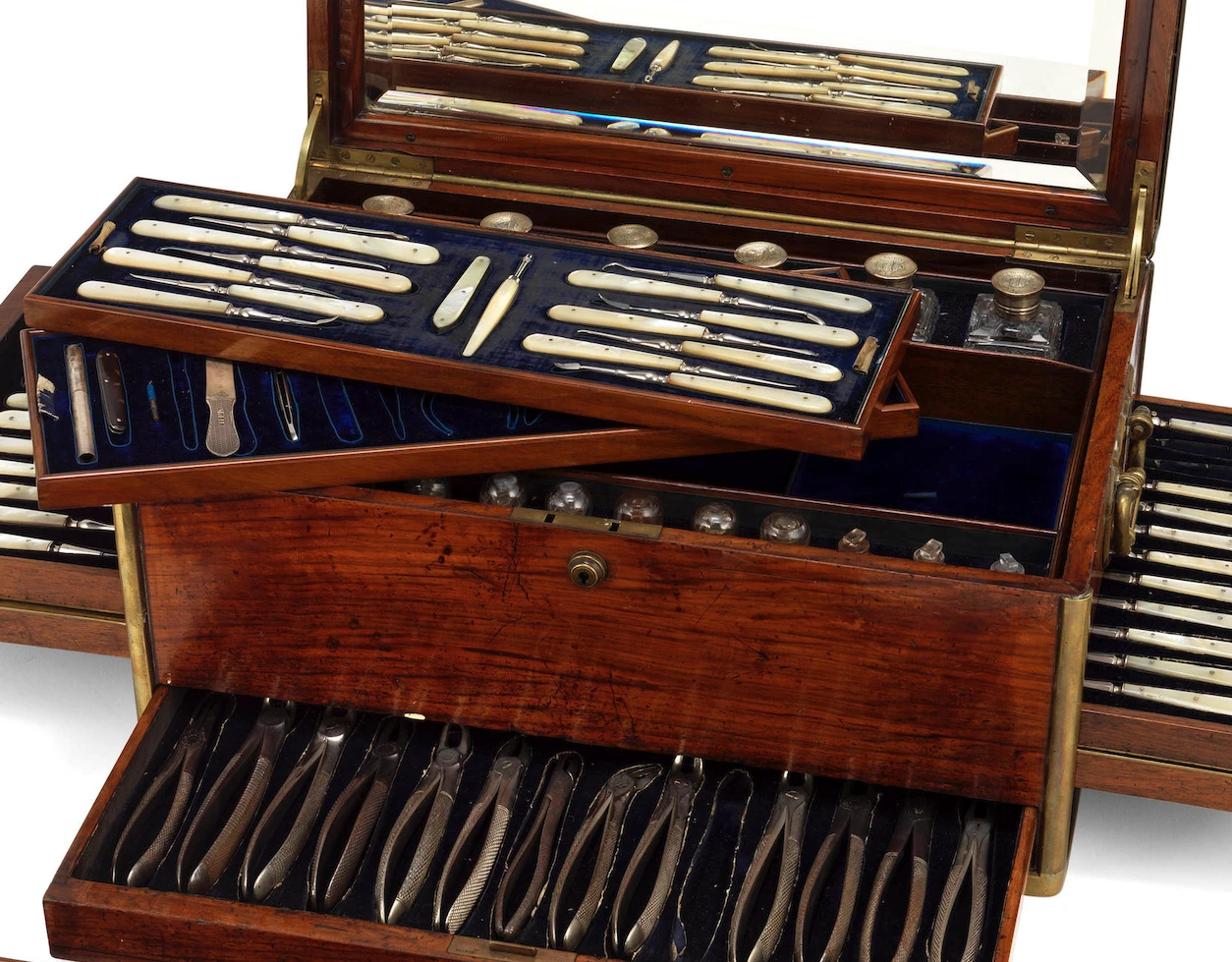
England, 19 C. 2 half
A fine presentation Dentistry and Surgical Chest, English, late 19th century is contained in the walnut brass-bound case, with an engraved brass plaque on the lid with a leopard coat of arms inscribed LABOR OMNIA VINCIT, C.I.H. ("Work conquers all"), with four Bramah locks and associated key for the lid and the front and side compartments. The compartments (three with beveled mirrors), fitted with blue velvet covering lodgements for instruments, contain cut-glass bottles with glass stopper and hinged metal cap bearing the same motto, a Claudius Ash & Sons booklet with dental tin foil leaves, dental and surgical instruments with mother-of-pearl (nacre) or tortoiseshell handles, some with decorative carved mother-of-pearl handles. The instruments are marked: SAVIGNY & CO, LONDON; MAW SON & THOMPSON, SWS, and SMALE. Property from a private collection, acquired in the mid-20th century. By repute commissioned and used by a dental surgeon aboard an early Transatlantic luxury liner.
FIRM
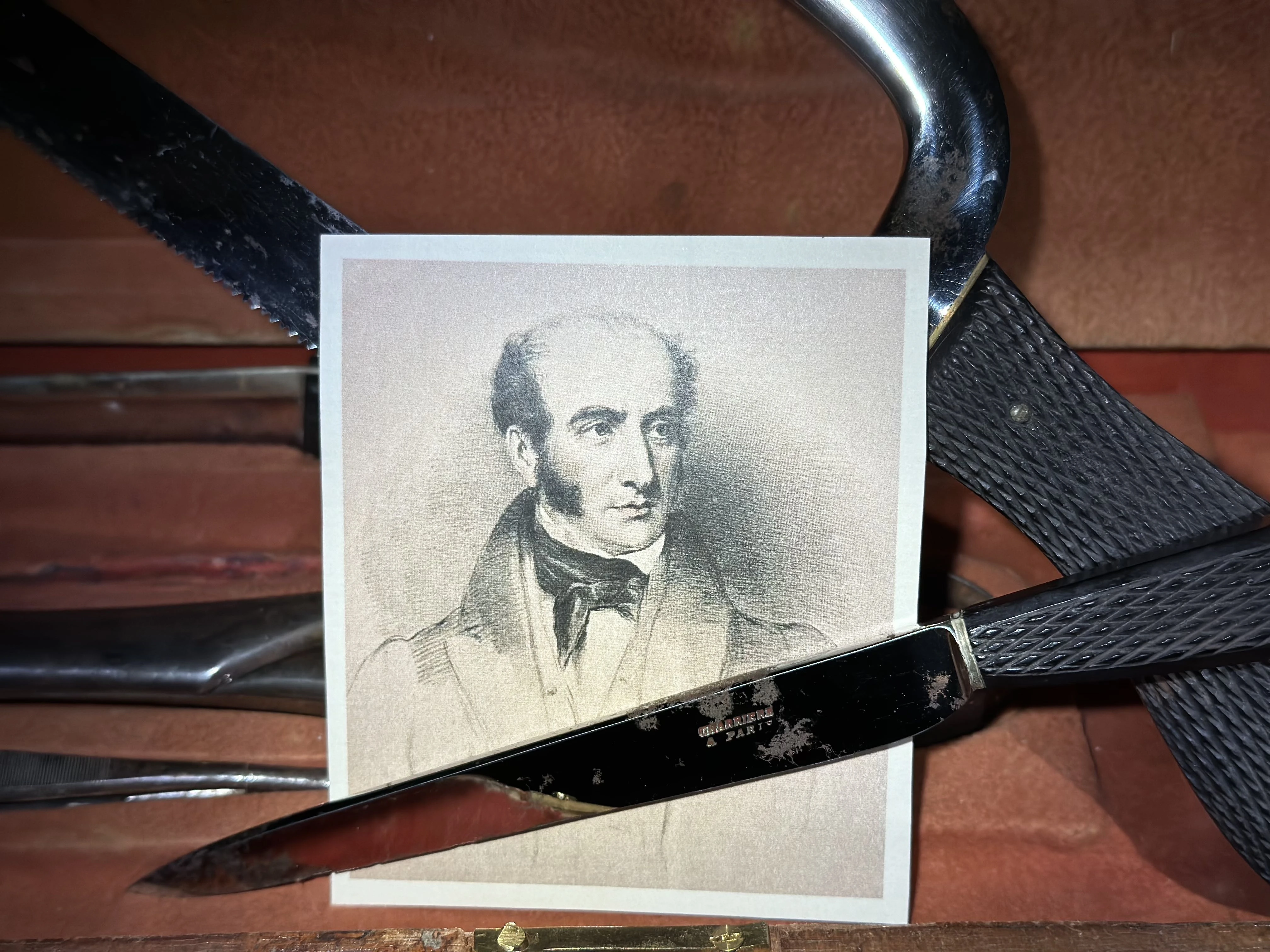
France, Paris
The French company Charrière, founded by Joseph-Frédéric-Benoêt Charrière in the early 19th century, stands as a testament to innovation in medical instrument manufacturing. Born in 1803 in Switzerland, Charrière moved to Paris as a teenager and eventually took over his mentor's cutlery workshop. He became renowned for producing high-quality surgical instruments, notably in lithotripsy and anesthesia. Charrière's technical skill, creativity, and eagerness to learn from surgeons directly influenced his designs. He is also credited with creating the 'Charrière scale,' a measurement standard for medical instruments (also known as 'French gauge'). After his death the company worked under the name Maison Collin till 1957 when it was taken over by Maison Gentile. Charrière's legacy in medical technology endures, symbolizing groundbreaking advancements in healthcare tools.
MUSEUM

England, London
The Science Museum in London hosts one of the world’s largest medical collections, born from Sir Henry Wellcome’s vision to preserve the history of healing through objects. The modern Wellcome Galleries display over 3,000 items—from Fleming’s penicillin mould and the first MRI scanner to early prosthetics and surgical robots. Blending science, history, and ethics, the galleries engage millions of visitors yearly, while the digital catalogue and ongoing acquisitions ensure global educational and research impact.